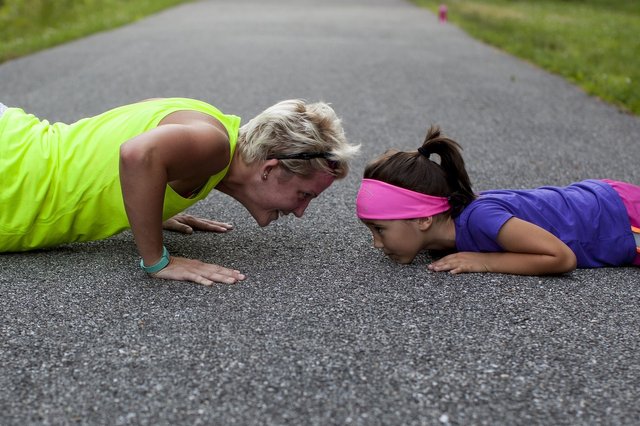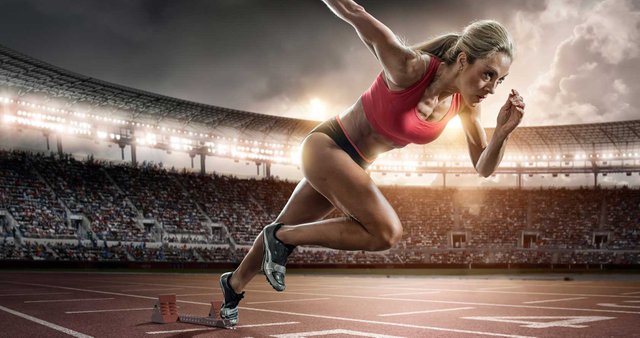Evaluation of Exercising in Hot Environment

Exercise is good for our body system for us to maintain a good health if done properly. It is better you stay safe when exercising in hot weather to avoid health-related illnesses. Heat cause dehydration of the body, which is not good for our health. Exercise itself increase our body temperature because of the activity, no to talk of exercising under the hot weather, it is just like bathing with fire. Body respond to heat to cool the body by sending more blood to circulate all over your skin, which will leaves less blood to circulate the muscle and in turn increases your heart rate.
Active muscles not only produce metabolic heat, but also stimulate the sweat glands in order to secret fluids with electrolyte to the skin. Simultaneously, the smooth muscle with can be found within the skin blood vessels dilates which in turn increase the flow of blood to the skin.

*Under normal circumstances, the body skin, perspiration level and the blood vessels adjust to the heat. This is known as thermal adaptation; the ability of the body to adjust to temperature. For instance, when you poured very cold water on your body, you felt shocked instantly, message is passed across to your brain, but after a minutes or more, you poured another turn of cold water you felt normal, it is because your body had adjusted to the temperature of the water. Portion of sweat reliefs the skin temperature, and the skin blood flow carrying heat out from the body’s core to the air. Anytime the quantity of metabolic heat surpasses body heat loss, hyperthermia (i.e., the condition whereby the body temperature is abnormal which is usually caused by the heat-regulating mechanisms of the body to regulate the heat coming from the immediate environment) may develop. The cardiovascular system is very important for body temperature regulation. Individual that easily get used to any type of climate are most successful to control body heat.
Counteracting Dehydration
Dehydration level in the body system of 3% and 5% loss of the body entire weight may be endurable without any damages to the body or loosing maximum body strength. Nevertheless, steady exercise that lasts for hours will begin to drop because of the increase in dehydration of the body, from moderate to severe dehydration of the water in the body system which will also leads to loss of higher percentages of the entire body weight. The greater the dehydration, the more the aerobic exercise performance deteriorate. Acute dehydration worsen endurance performance, regardless of entire body hyperthermia or immediate environmental temperature and also the endurance capacity which is reduced more in hot environment compare to in a cold temperature .
The effective method to maintain normal body hydration condition is to measure your body weight before and after engaging in any kind of exercise. It is recommended that if you are very active (engaging in physical activities) you should drink at least 1 pint equal to 1/8 of a gallon of fluids or at best clean water for each pound of your body weight lost due to dehydration.
Medical Stands on Exertional Heat Illness
There are several illness that can manifest in the body due to heat or rise in temperature of the body ranging from dangerous hyperthermia, muscle cramps, heat exhaustion, kidney failure, vomiting, diarrhoea, immersion diuresis among others.
Especially, heat exhaustion is very common type of illness caused by dehydration among athletes. Heat Exhaustion is the inability to continue exercise in the heat which is classified under eminent weakness of the body without having severe hyperthermia. In this case correction can be made by replenishing the body with water and electrolytes orally. Oral rehydration therapy is recommended for this, because the method is less painful, less passive and not expensive. It can be prepared locally for treating mild dehydration. Note: injecting pure water through vein can cause lysis of red blood cells.
Intravenous fluid administration facilitates recovery in those who are not able to take oral fluids or who have severe dehydration.
Exertional heatstroke is majorly caused by hyperthermia (i.e., a core temperature rising greater than 40°C) and this is associated with the central nervous system disturbances causing several organs failure in the body system. It is very dangerous. Life-threatening medical emergency that requires urgent and effective entire body cooling with cold water or ice-water immersion therapy. The greatest risk for heatstroke exists during high intensity exercise when the ambient wet bulb globe temperature (WBGT) exceeds 28°C (82°F). Inadequate physical fitness, excess adiposity, improper clothing, protective pads, incomplete heat acclimatization, illness, or medications also increase risk.
Heat cramps often happen to large abdominal and limb muscles during engagement in the sports and exercise. Muscle fatigue, water loss, and significant sweat sodium are contributing factors. Heat cramps respond well to rest, prolonged stretching, dietary sodium chloride (i.e., one-eighth to one-fourth teaspoon of table salt or one to two salt tablets added to 300–500 mL of fluid, bullion broth, or salty snacks), or intravenous normal saline fluid. Heat syncope occurs more often among unfit, sedentary, and no acclimatized individuals. It is caused by standing erect for a long period of time or at the cessation of strenuous, prolonged, upright exercise because maximal dilation results in a decline of blood pressure (BP) and insufficient oxygen delivery to the brain.
Exercise Prescription
Health/fitness professionals and clinicians may use standards established by National Institute for Occupational Safety and Health (NIOSH) to define:
WBGT levels at which the risk of heat injury is increased, but exercise may be performed if preventive steps are taken.
These steps include required rest breaks between exercise periods. Individuals whose exercise prescription specifies a target heart rate (THR) should maintain the same exercise HR in the heat. This approach reduces the risk of heat illness during acclimatization. For example, in hot or humid weather, reduced speed or resistance will achieve the THR. As heat acclimatization develops. A progressively higher exercise intensity will be required to elicit the THR. The first exercise session in the heat may last as little as 10 to 15 minutes for safety reasons but can be increased gradually
Monitor the environment
Use the environment climate condition to determine appropriate action.
Modify activity in extreme environments
give access to ample fluid, provide longer and/or more rest breaks to facilitate heat dissipation, and shorten or delay exercising. Consider heat acclimatization status, fitness, nutrition, sleep deprivation, and age of participants; intensity, duration, and time of day for exercise; availability of fluids; and playing-surface heat reflection .Allow at least three good (3) hours, and preferably 6 hours, of recovery and rehydration time between exercise sessions.
Heat acclimatization
Increase exercise heat stress gradually across 10 to 14 days to stimulate adaptations to warmer ambient temperatures. These adaptations include decreased rectal temperature, HR, RPE, increased exercise tolerance
time, increased sweating rate, and a reduction in sweat salt. Acclimatization results in
- improved heat transfer from the body’s core to the external environment;
- improved cardiovascular function;
- more effective sweating; and
- improved exercise performance and heat tolerance.
Clothing
Clothes that have a high wicking capacity may assist in evaporative heat loss. Athletes should remove as much clothing and equipment (especially head gear) as possible to permit heat loss and reduce the risks of hyperthermia, especially during the initial days of acclimatization.
REFERENCES
American College of Sports Medicine Position Stand. Exercise and physical activity for older adults.
Med Sci Sports Exerc. 1998;30(6):992–1008.American College of Sports Medicine Position Stand. Exertional heat illness during training and
competition. Med Sci Sports Exerc. 2007;39(3):556–72.Binkley HM, Beckett JDJ, Casa D, Kleiner M, Plummer PE. National Athletic Trainer’s Association Position Statement: Exertional heat illnesses. J Athl Train. 2002; 37:329–43.
oww exercize.....
@poleleye i love this post cos health is wealth
Thanks
thank you bro
You are welcome @igider
Congratulations! This post has been upvoted from the communal account, @minnowsupport, by polaleye50 from the Minnow Support Project. It's a witness project run by aggroed, ausbitbank, teamsteem, theprophet0, someguy123, neoxian, followbtcnews/crimsonclad, and netuoso. The goal is to help Steemit grow by supporting Minnows and creating a social network. Please find us in the Peace, Abundance, and Liberty Network (PALnet) Discord Channel. It's a completely public and open space to all members of the Steemit community who voluntarily choose to be there.
If you would like to delegate to the Minnow Support Project you can do so by clicking on the following links: 50SP, 100SP, 250SP, 500SP, 1000SP, 5000SP. Be sure to leave at least 50SP undelegated on your account.